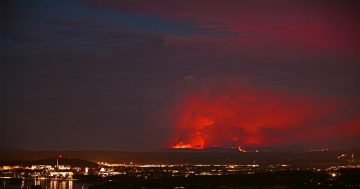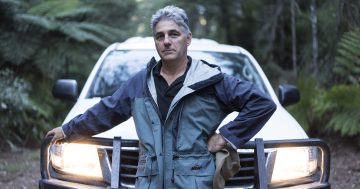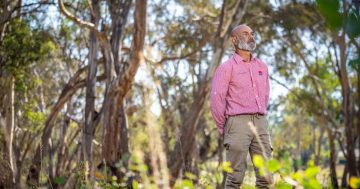
Australian National University’s Professor David Lindenmayer. Photo: James Walsh.
The Nature Conservation Council (NCC) is calling on the NSW Government to scrap planned logging operations near towns and settlements on the NSW Far South Coast, parts of the Snowy Mountains and in the north of the state after new research found it significantly increased the risks of catastrophic fires.
For towns like Mogo, Eden and Brooman – even Batlow – it’s been equated to a ticking time bomb the government has a responsibility to diffuse before it’s too late.
The research, undertaken by the Australian National University (ANU) and published in the science journal Ecosphere, analysed the severity of Australia’s 2019-2020 bushfires by examining the amount of damage to vegetation.
Co-author ANU Professor David Lindenmayer said weather had a large effect on the fires, however the age of the forest also swayed outcomes.
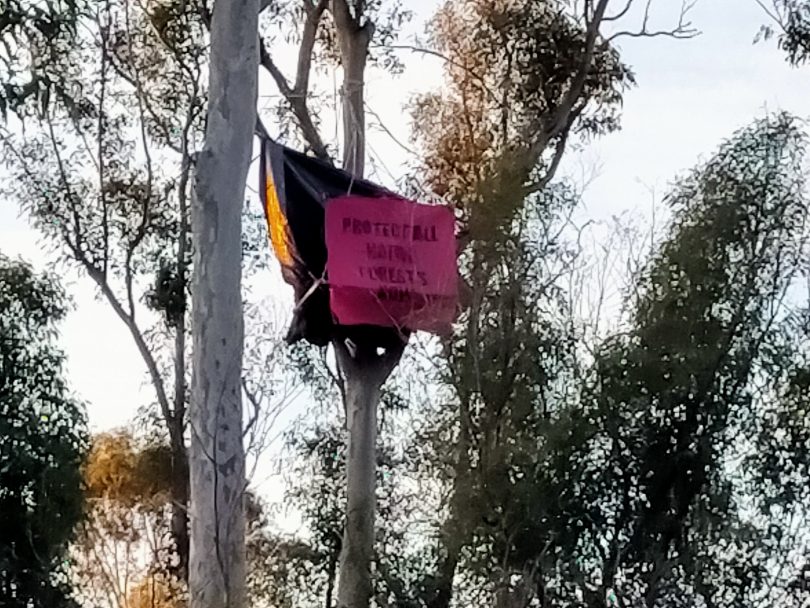
Anti logging activists protested against the resumption of logging in forests badly impacted by the 2019-2020 Black Summer bushfires. Photo: Supplied by James Tremain.
“Forests burned at very high severity when they were between 10 to 40 years old,” he explained, “and young forests regenerating after logging were particularly susceptible to very high severity fire.
“Our findings show there should be no logging near rural towns and other communities.”
Professor Lindenmayer said that at a time when the risk of extreme fire weather had risen 10 times since the 1960s, “we must do everything possible to keep country people safe”.
“Reducing the flammability of forests is crucial,” he added.
Co-author Dr David Taylor said the study’s results mirrored studies conducted after the 2009 Black Saturday fires, where logged forests were also found to be at a greater risk of high severity wildfire.
“More and more research, not only in Australia but also from around the world, is showing that young forests are very flammable,” Dr Taylor said.
“I am extremely worried about how much young and highly flammable forest now occurs in much of Victoria and southern NSW.
“Much of this is a result of past fires and a long history of industrial logging.”
Professor Lindenmayer is calling for new technologies to help detect and extinguish fires as soon as they ignite.
“This will help save properties and lives,” Professor Lindenmayer said.
“New drone and detection capabilities can be a huge help in detecting and locating fires as they ignite.
“At the same time, we must more rapidly suppress any fires that do start, and control them when there is the best chance of suppression success.
“Again, technology is key to achieving this.”
The NCC says by banning the logging of native forests the government would be protecting the nearby communities from a repetition of the 2019-20 catastrophic fires.
They say that with logging active in Mogo State Forest 180A, there are plans for NSW Forestry to log Mogo State Forest 146A, just a kilometre from the town of Mogo. In the past few years, they maintain, logging was completed in Mogo State Forest 144, 145 and 159 which directly border the town.
READ ALSO: Red Cross says 93 per cent of bushfire donations have now been spent on victims
The NCC says Mogo was decimated during the Black Summer fires and NSW Forestry has already returned to logging surrounding forests.
Active logging is occurring in Shallow Crossing State Forest 212A near Brooman and NSW Forestry is proposing logging operations in South Brooman State Forest which, according to the NCC, puts settlements in the Brooman area under threat.
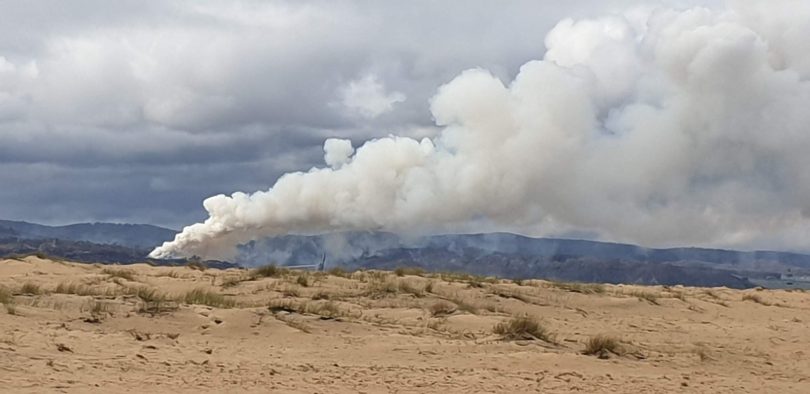
January 2020, when smoke from the border fire and Eden Chip Mill fills the skies. Photo: Mia Maze.
Further south, countless logging operations are active or planned for forests south of Eden.
The NCC says, during the Black Summer bushfires, the fire – which was extreme due to decades of logging, burnt the Eden Chipmill and threatened the town.
Batlow in the Snowy Mountains was also at risk due to its proximity to the Alpine Ash forests in Bago State Forest, while Nana Glenn and Nambucca Heads have been cited as at-risk communities in the north of the state.
“This new research supports a ban on native forest logging near rural towns and settlements to minimise the risks of catastrophic bushfires like those that ripped through eastern NSW in 2019-20,” NCC chief executive Chris Gambian said.
“Right now, Forests NSW is preparing to log forests very near several towns on the South Coast, including Mogo, which was almost wiped off the map by the Black Summer fires.
“Mogo is not the only settlement in NSW that is being put at risk by logging – there are many others,” he said.
Mr Gambian said the NSW Government had a clear responsibility to protect communities from catastrophic fires by banning logging close to these vulnerable settlements.
“Under modern logging practice, most forests are logged on 50-year cycles,” he said.
“This means most of these production forests are ticking time bombs that could go off at any time, potentially wiping our whole communities.
“These forests should be left to grow old, with appropriate fuel management, so to minimise the risk they pose to people.”







